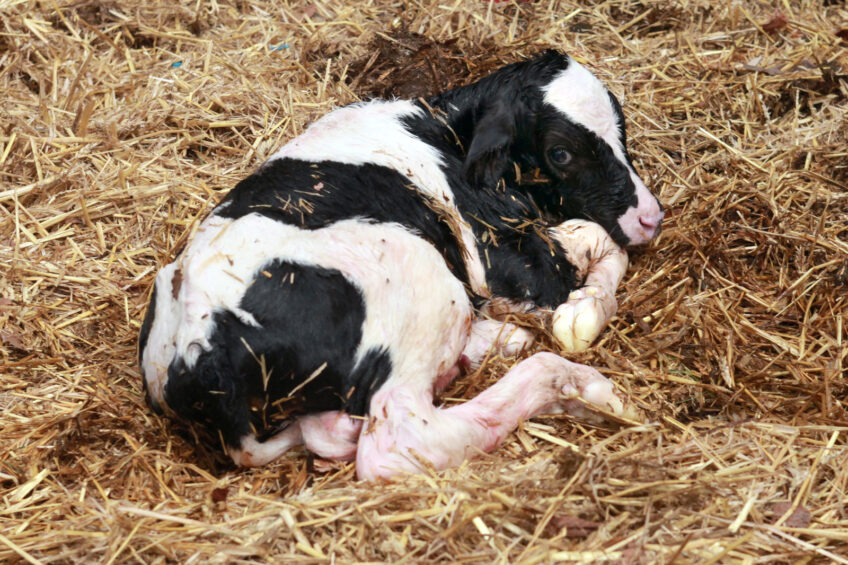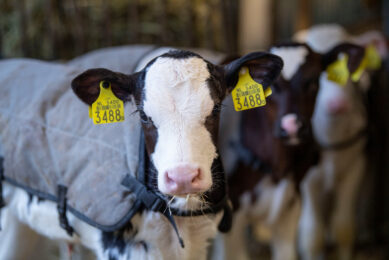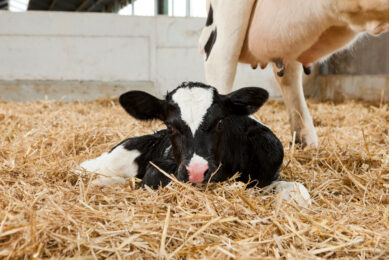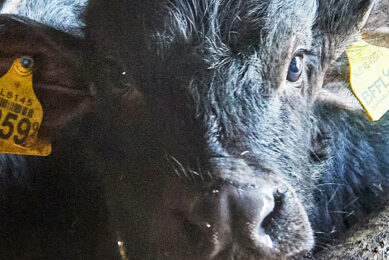Creating the best start for calves

Close attention should be paid to calf rearing techniques. If calves fail to reach target growth rates throughout their development, it will have negative implications later, particularly when they start their first lactation cycle.
As no maternal immunoglobins can pass the placenta barrier the calf is born without an active immune system and does not have the necessary antibodies at birth to protect from bacterial infections. From birth, the newborn calf is expected to defend for itself, with passive immunity as the only mode of defence via colostrum feeding. The ability for a calf to absorb the much needed antibodies from the colostrum decreases after the first 24 hours from birth as the gut barrier loses its permeability.
Therefore, it is important that colostrum is fed within the first hour of birth and the calf should receive its total colostrum requirement within 6-8 hours of birth. The end result we want to achieve by feeding colostrum is to get a calf with the same antibodies as the dam. Antibodies from colostrum protect calves until their active immune systems are fully functional. However, there is a gap between the passive immunity coming from the mother’s colostrum and the calf’s own innate immunity, which develops 14 to 21 days after birth. This corresponds to a high risk time period of calves contracting disease (Figure 1). This highlights why the gap needs to be narrowed to give the calf the best protection against infections.

Increasing the immune status
Colostrum quality is influenced by the dam’s pre-calving nutrition and micro-nutrition. Studies have shown that feeding a special close-up cow diet, specially formulated to increase the quality of colostrums, can significantly increase immunoglobulin content, which extends the protection that the mother’s colostrum provides. Selenium is involved in supporting the immune response and using organic selenium instead of inorganic sodium selenite in the diet of the dam results in an improved immune response. Organic selenium* fed to pre-calving heifers and cows increases the selenium status of dams, as well as their calves through increased selenium concentration in colostrum and milk (Guyot et al., 2007). Supplementation with mannan-oligosaccharides** has also been shown to improve immune response to rotavirus vaccination (Franklin et al., 2005).
New type of milk replacer
After a few days of colostrum feeding, there are several liquid feed options available. One or several different liquid feeds may be fed throughout the year. These include milk replacers, waste milk, fresh or fermented colostrum, or whole milk. Any of these options can be an excellent feed when available. Research indicates that a variety of liquid feeds fed at correct dilution rates can achieve satisfactory results. Calves may be started on a milk replacer when four to six days old, but the switch from whole milk to milk replacer should be gradual. Abrupt changes will increase the likelihood of nutritional scours and stress. Table 1 shows the recommended nutrient composition of milk replacer. Milk replacers can be manufactured with a variety of ingredients and levels of nutrients to match management requirements of a variety of farms.
Feed technologies that boost immune system development of the newborn calf can be added to milk replacer in order to contribute to improved health from reduced incidence of scours and a reduced cryptosporidium presence in faeces in the first three weeks of age. This closes the immunity gap for the calf. A study with a new type of milk replacer*** (hereafter called milk replacer) showed that heifer calves fed this milk replacer had significantly higher daily weight gain (0.134 kg/d higher, P-value=0.02) compared to the control group. There were no disease events recorded during the study, thus, therefore the difference in weight gain is most likely attributed to the higher nutritional status of the calves having been fed the milk replacer.
Dry feed and weaning
When a calf is born it has only one stomach actively working, compared to four in a cow. This stomach, the abomasum, is able to digest high quality milk only, in the form of colostrum, milk and milk replacer. However, calf starter feed should be available to the calf from three to five days of age as it prepares rumen development in the calf. Calves that are fed milk and starter feed have a better developed rumen than calves just fed milk with the rumen wall having more papillae. Papillae are ridges in the wall of the rumen, the more papillae there are the more nutrients the calf can absorb. Next to solid feed, calves should also have continuous access to fresh clean water from birth. Insufficient water results in slower rumen development and reduces feed conversion rates. By eight weeks, forage should be introduced to develop the rumen volume.
Feeding solids and water to calves from the first week:
• Provide potable water from the first week
• Give small portions (handfuls) of fresh, tasty high-quality concentrate
• Refresh the concentrate regularly to ensure that the calf is continuously offered a tasty feed of high hygienic quality
• Offer fresh, clean forage from first day in life
• If feeding a mix, change it on a daily basis to avoid fermentation or deterioration
Calves can digest fibrous feed when they reach six to eight weeks of age as their digestive system develops. The target weaning time should be established on the individual farm to ensure it can be achieved. However, a calf should be eating at least 1kg of starter solid feed per day over three consecutive days before it is weaned. Calves should not be weaned at a stage of increased stress, such as illness or dehorning as this will have an effect of weight loss post weaning. The aim should be to achieve less than 5% mortality by weaning. As any other area in dairy farming, calf performance has to be regularly monitored so that targets in terms of age at first calving can be met. This is extremely important as this reduces the unproductive life of the future dairy cow and thus has a direct impact on farm bottom line and milk carbon footprint.
Conclusion
Proper feeding and care of young calves is the first step in raising healthy, productive replacement animals to enter your milking herd. Feed colostrum within the first eight hours to provide calves with essential nutrients and antibodies. Match milk replacer to growth and weaning age goals to meet calves’ needs and to balance feed costs and animal performance. Offer a palatable calf starter by three days of age to stimulate rumen development and allow weaning by four to six weeks of age. From three days of age, make fresh, clean, free-choice water available.
*Sel-Plex®, ** Bio-Mos®, *** Blueprint Milk ReplacerTM
Join 13,000+ subscribers
Subscribe to our newsletter to stay updated about all the need-to-know content in the dairy sector, two times a week.










